Some finer details... Red.
Awh the joys of interpretation... I spend more time looking after my charges than reading formal papers on them... Left on my lonesome as I often am, observations are readily made as to the reasons behind some wildfowl colourations. I love tying physical changes in to breeding behaviour and attributing breeding success to physical observations. I fully admit that these observations may not always tie up, but you can tell me if you think I've got it right, after all; so little formal statements exist that the magical formula might still be waiting for imminent discovery!
The White-winged wood duck at Slimbridge always colour-up in the early spring ready for egg laying. They do this purely in the eye department! If you take a really close look, the eye fills up with what look like teeny tiny separate pixels of blood red pigment. My personal experience indicates that both males and females do this, and that a lack of red in the eyes can either show immaturity or show an exhibited weakness of some kind. It might not be a coincidence either that the white-wing breeding display involves a lot of vigorous head bobbing. Maybe waving your blood red cornea set among mottled irridescent green and white feathers in your partner's face is superbly attractive?
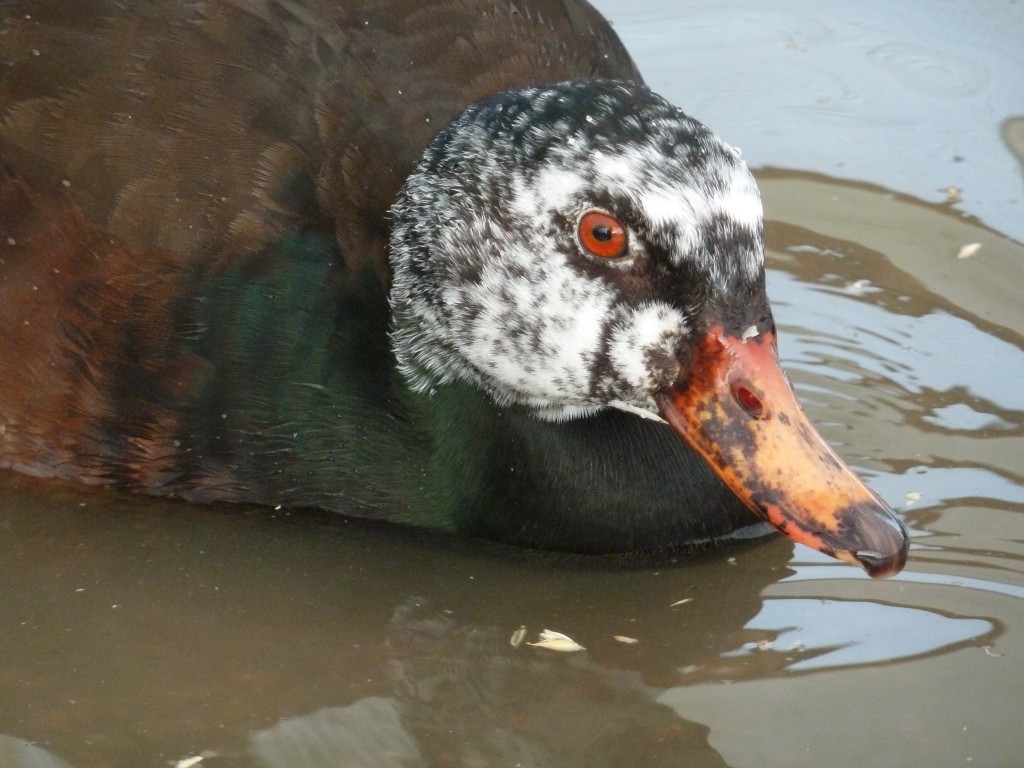
The male pictured is getting on now in white-wing years, at the ripe(ish) age of 6. Age is most readily indicated aesthetically on the species by staining on the beak and dark colour splotches on the legs and feet. Despite his age he still has the stoic sense of mercilessness of a bird defending his female and territory. True to form, the female has laid a large clutch of 13 eggs with good fertility. To date we have hatched out 5 little beauties from this pair in 2014!
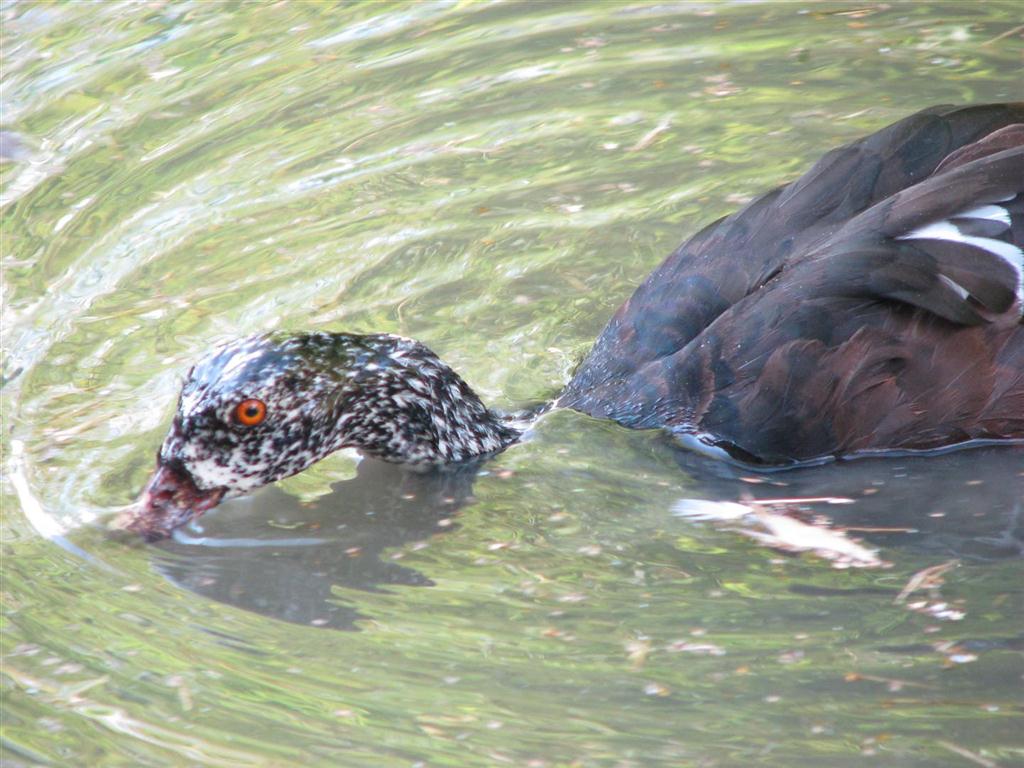
A Demoiselle crane also loves a blood-red eye. With a vivid stream of white flicking backwards into the crest; this bird certainly means business! Indeed they are by no means alone in this, with the male Redhead, Canvasback, Southern Pochard, Rosybill, and Carolina wood duck all exhibiting a red eye.
My thoughts are that perhaps the colour red has a significant part to play in the UV spectrum of these birds as well as the long-established white. Seeing that many of these species are pochardy types, I had thought previously that a white-eye was the sole realm of pochard flirtation. Maybe then in the wildfowl world red is closer to white than in our own and proves a solid substitute.
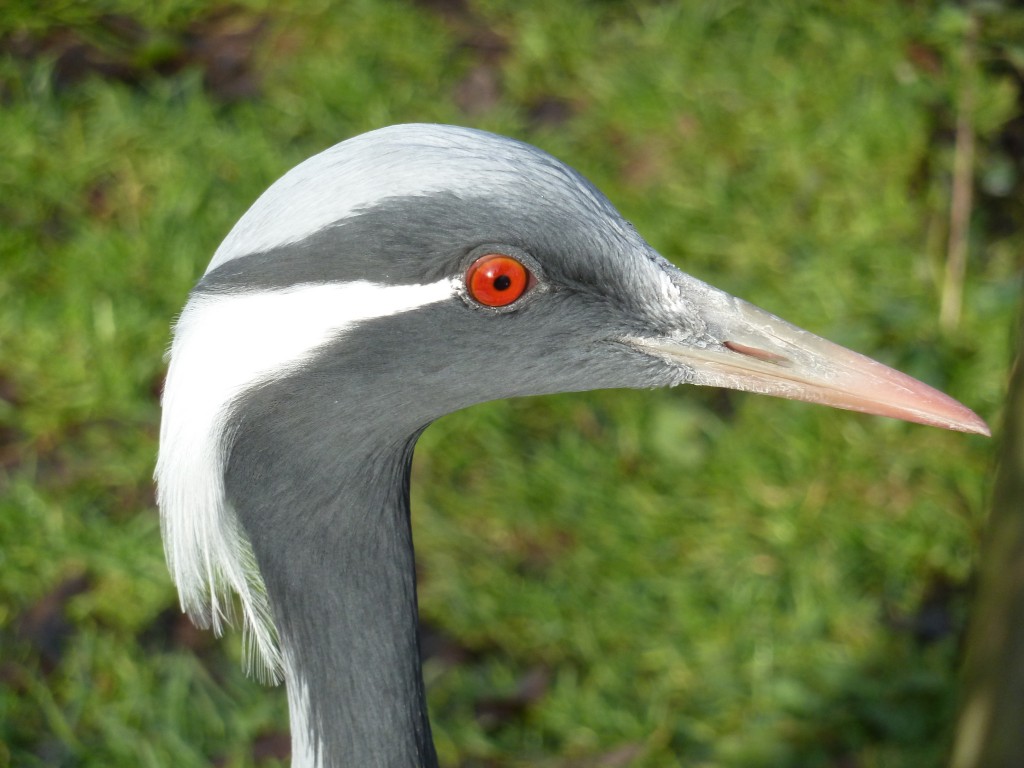
The Eurasian crane or Common crane (Grus Grus) on the other hand prefers a blood red scalp. This beautiful beastie in particular with the darvic letters EC2 exhibits very confident behaviour in body as well as aesthetic.
This dramatic gesture is a genuine threat vaguely disguised as preening. It is one of many options that they have in their arsenal. The most significant for their colour red however is sadly not pictured here. They perform a prominent bow which reveals the red scalp to their foe, and then stand back up as tall as possible whilst bristling and fluffing up from every possible follicle. Each posture is designed to give a direct message by emphasising both their colour and size; "don't mess with me!"
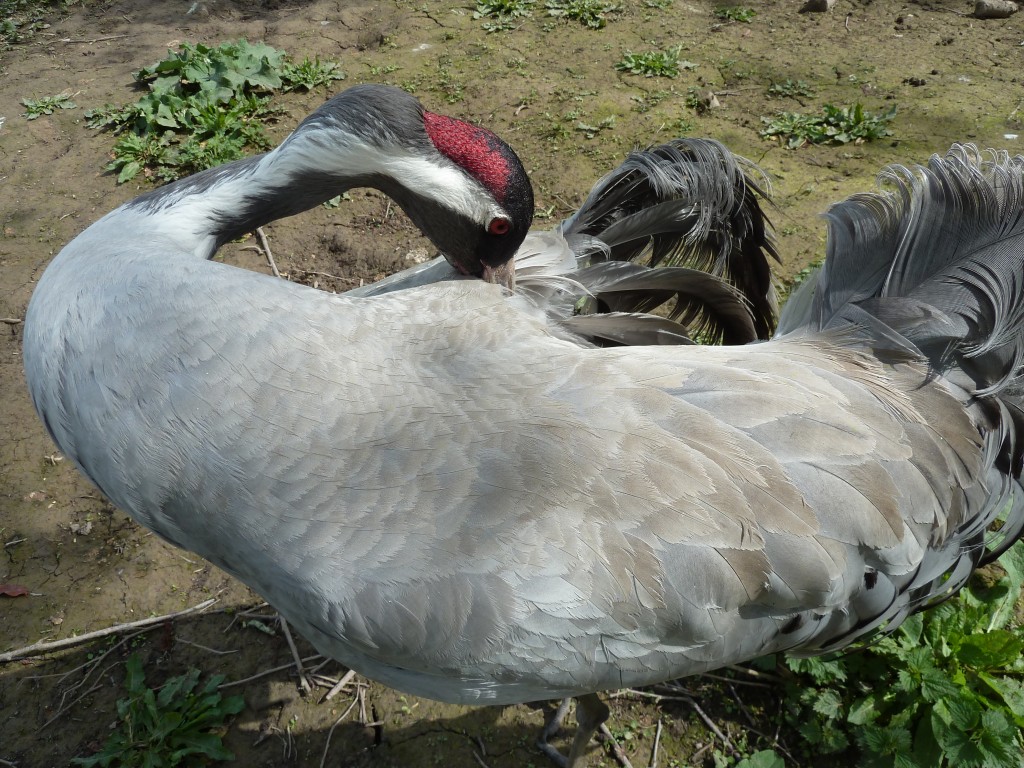
The elusive Black-headed duck male loves a read beak. These ducks are obligate brood parasites, and so because these birds do not pair together I think that they have had to find a way of showing off whilst not compromising their camouflage. Instead they compete with their red nostrils and glossy black manes.
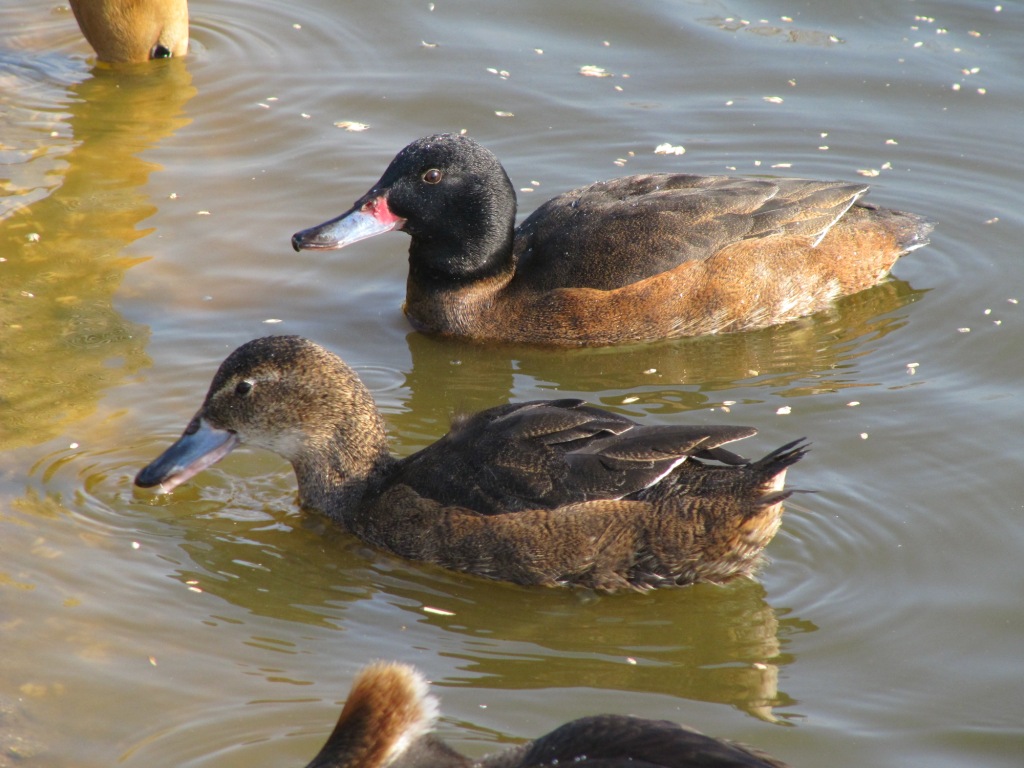
The male Freckled duck does much the same, but takes his red upper mandible preference one step further by beefing it up! Swelling the nostril area is something normally favoured by the stifftail group like the white-headed duck. The more swollen the better, and so we keep the species in groups of 2:3 so that the boys can compete with one another and the females can have a rest from their attention. In fact, when the females are sitting in one particular aviary, the males often join in with the competition next door by peeking through the fence!
This spring, in our third mixed aviary I swapped out our old breeding male for a fresh 3 year old male that we bred in 2011. He was chosen for his stunning mandible and cheeky chappy attitude, but for the first 3 weeks he appeared so taken aback by his good fortune that he seemed to stand in awe of the mature females. By the 4th week he started to fade and hide in the undergrowth as if he wasn't up to the challenge at all :( This morning however, everything has finally changed! The males next door have recently decided that they would quite like his girls, and this morning I finally witnessed his first copulation. His red nostrils are back and he is wondrous shiny; just look at him!
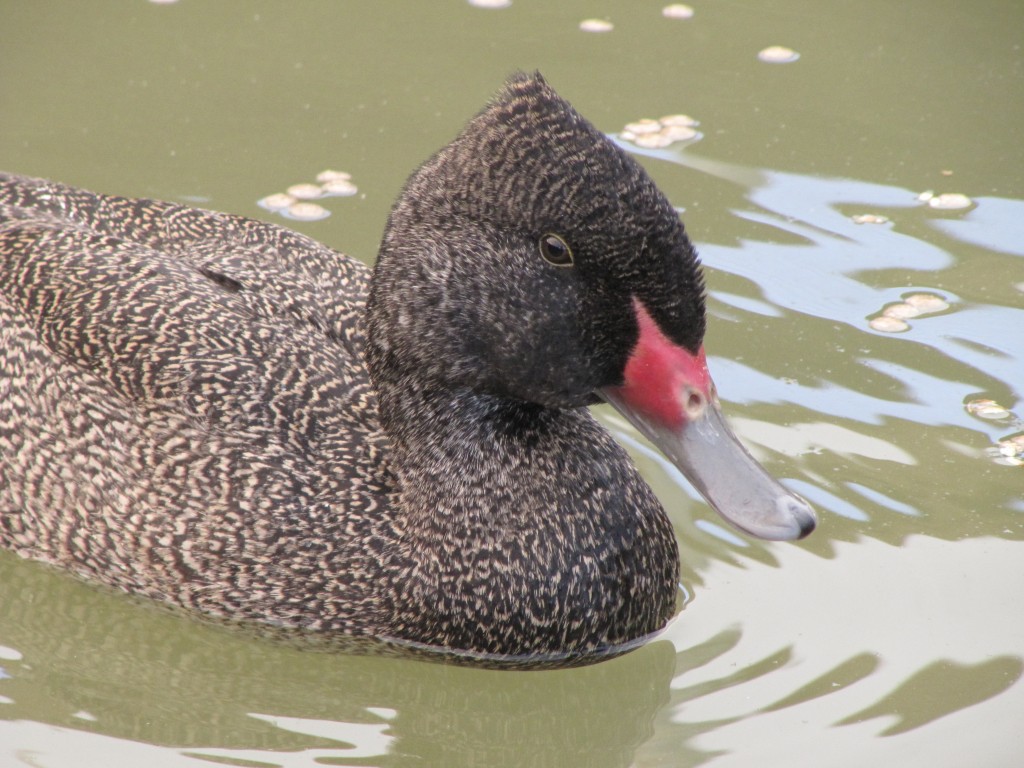
And if you wanted a closer view... here is a birds-eye view (possibly!) of the skull cap of a Red-crowned crane. It took me by surprise the first time I touched one. It feels like pimpled elbow skin! As they reach adolescence their scalp feathers fall out and in their place these funny little polyps grow! What amazes me is their capacity for change within a season. The patch of red can grow or recede remarkably quickly depending on whether the birds have the capacity to breed.
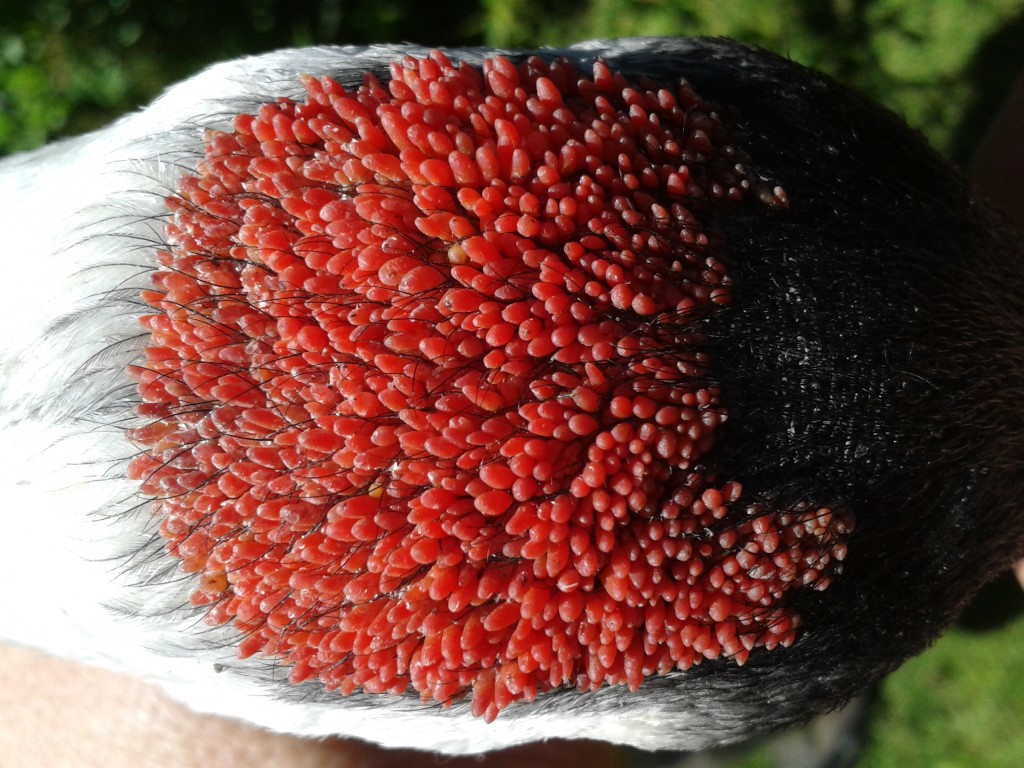
This scalp is from our young Red-crowned crane male. 2 years the junior of his female, he has had one hell of a feisty female role model! She keeps her red scalp nearly 10 months of the year, and really keeps him on his toes. For a couple of years she used to look at me as if to say "why this male?" but now she and he are defiantly proud of one another.
Red. The white-naped crane has a red pimply face!
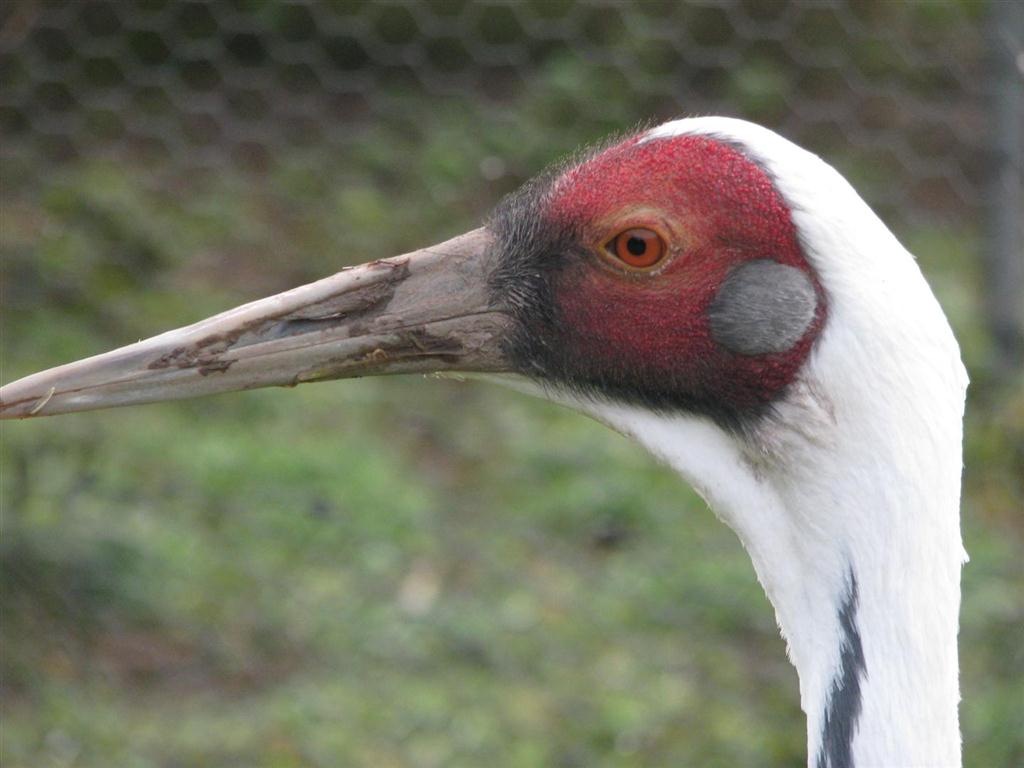
Red. The spur-winged goose swells his browline!
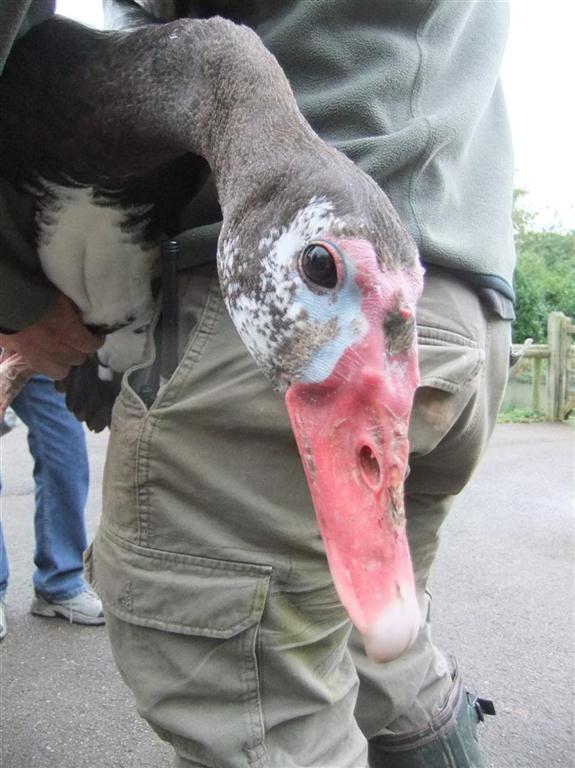
Red. It is as symbolic in our world as the bird world, and I just love looking at how they use it :)

